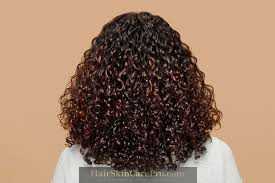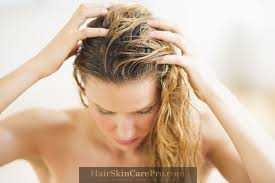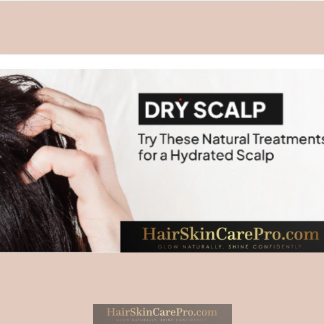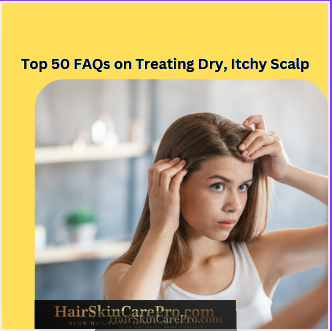Embracing curly hair goes beyond just a style choice—it embodies a unique way of life. Those captivating curls and undulating waves not only catch the eye but also demand extra care compared to other hair textures. Moisturizing products play a pivotal role in sustaining the vitality and allure of curly hair. Let’s delve into the realm of curly hair moisturizers, delving into elite formulations, key ingredients to seek out, and guidance for selecting the ideal moisturizer for your curls.
Table of Contents(best moisturizer for curly hair)
- Introduction to Curly Hair Care
- The Significance of Moisture for Curly Hair
- Top Picks for Curly Hair Moisturizers
- Product 1: SheaMoisture Coconut & Hibiscus Curl Enhancing Smoothie
- Product 2: DevaCurl SuperCream Coconut Curl Styler
- Product 3: Cantu Shea Butter Leave-In Conditioning Repair Cream
- Product 4: Mielle Organics Pomegranate & Honey Leave-In Conditioner
- Product 5: Briogeo Curl Charisma Rice Amino + Avocado Leave-In Defining Crème
- Understanding Different Curl Types and Their Requirements
- Vital Ingredients to Seek in a Moisturizer
- Significance of Hair Porosity
- Best Application Techniques for Moisturizers
- DIY Formulas for Homemade Moisturizers
- Common Errors to Steer Clear Of
- Conclusion: Embracing the Curly Hair Journey
—Curly hair presents a unique set of challenges and delightful rewards due to its reaction to humidity and susceptibility to dryness. This guide is crafted to assist you in discovering the finest moisturizers that address the specific needs of curly hair.
The Importance of Moisture for Curly Hair
Naturally drier than straight hair, curly locks pose difficulties for scalp oils to reach each curl due to their twists and turns. Hence, moisture plays a crucial role in hydrating, defining, and safeguarding the charm of those curls.
Top Moisturizers for Curly Hair
Highlighted below are some of the top-rated moisture products for curly hair, endorsed by individuals with curly locks:
Product 1: SheaMoisture Coconut & Hibiscus Curl Enhancing Smoothie
Summary:
This product is highly favored among individuals with curly hair, renowned for defining curls, minimizing frizz, and imparting a beautiful luster.
Key Components:
- Coconut Oil: Nurtures and shields hair from heat and chemical harm.
- Silk Protein: Renders hair smooth for a soft, silky texture.
- Neem Oil: Manages frizz and imparts a glossy sheen.
Merits:
- Intensely hydrating.
- Accentuates the natural curl pattern.
- Adheres to ethical and sustainable brand practices.
Drawbacks:
- Might be excessively dense for fine hair.
- Potent fragrance that may not be universally appealing.
Reviews:
“My 3c curls have never appeared better. The frizz has vanished, and the definition is astounding!” — Sarah T.
Tips for Application:
- Use conservatively; a little product goes a long way.
- Apply on damp hair, section by section, to ensure even distribution.
Product 2: DevaCurl SuperCream Coconut Curl Styler
Summary:
This versatile styler offers both moisture and control, catering to a variety of curly hair types.
Key Components:### Product Name: Packed full of nourishing ingredients, this product seals in moisture and boosts hair strength.
Key Ingredients:
- Coconut Oil: Rich in essential nutrients for deep hydration.
- Jojoba Protein: Enhances hair strength and elasticity.
Advantages:
- Versatile for multiple uses.
- Features a lightweight formula.
- Formulated without harsh chemicals.
Drawbacks:
- Positioned at a premium price point.
- Requires some trial and error for optimal performance.
Testimonials:
“It has completely transformed my 2b hair, giving it unprecedented bounce!” — Alex M.
Usage Tips:
- Begin with a small quantity and adjust as necessary.
- For enhanced definition, scrunch into damp hair and allow to air dry.### Item 5: Briogeo Curl Charisma Rice Amino + Avocado Leave-In Defining Crème
Summary:
This high-end product blends natural components to enhance and moisturize curls, offering exceptional control over frizz.
Essential Components:
- Rice Amino Acids: Safeguard the hair cuticle to prevent frizz-inducing humidity.
- Avocado Oil: Nurtures and fortifies hair strands.
- Tomato Fruit Ferment: Improves the consistency of the curl pattern.
Advantages:
- Outstanding frizz management.
- Defines curls without stiffness.
- Complies with clean beauty standards.
Disadvantages:
- Premium cost.
- Availability may be limited in certain regions.
Customer Feedback:
“My curls have never looked this sleek and well-defined, even on humid days!” — Lisa K.
Tips for Application:
- Apply to damp hair, concentrating on mid-lengths to ends.
- For optimal outcomes, diffuse or air-dry without disturbing the hair.### Beneficial Ingredients for Hair
- Natural Oils: Coconut, argan, jojoba, and olive oils deeply nourish by penetrating the hair shaft.
- Shea Butter: Renowned for its exceptional moisturizing abilities and capacity to lock in hydration.
- Aloe Vera: Soothes and hydrates the scalp, fostering optimal hair growth.
Ingredients to Steer Clear of
- Sulfates: Harsh cleansing agents that can deplete the natural oils in hair, resulting in dryness.
- Silicones: Tend to accumulate and impede moisture absorption into the hair shaft.
- Parabens: Synthetic preservatives that may pose potential health hazards.
Deciphering Labels
- Ingredient Order: Ingredients are arranged based on concentration, with the highest amount listed first.
- Identifying Harsh Chemicals: Look out for terms such as ‘sodium lauryl sulfate’ or ‘dimethicone’.
Significance of Hair Porosity
Hair porosity denotes the capacity of your hair to absorb and retain moisture. Understanding your hair’s porosity enables you to select suitable products and routines that will help maintain the health and hydration of your curls.
Hair Porosity Classifications
Low Porosity:
- Distinctive Features: The tightly bound cuticle layer impedes moisture penetration.
- Recommendations: Opt for lightweight, water-based products and utilize steam or heat during conditioning to facilitate cuticle opening.
Normal Porosity:
- Distinctive Features: The slightly raised cuticle layer allows for balanced moisture absorption and retention.
- Recommendations: Sustain a regular moisturizing and conditioning regimen to uphold hair health.
High Porosity:
- Distinctive Features: Gaps and holes in the cuticle layer enable rapid moisture absorption and loss.
- Recommendations: Utilize heavier creams and oils to preserve moisture and contemplate protein treatments for cuticle repair and strengthening.
Porosity Assessment: Submerge a clean hair strand in a glass of water. If it floats, your hair exhibits low porosity. A slow sinking indicates normal porosity, while fast sinking suggests high porosity.
Optimal Procedures for Moisturizer Application
Applying moisturizer appropriately is essential for maximizing its effectiveness. Here are some techniques to ensure your curls receive the necessary moisture:
The LOC Method (Liquid, Oil, Cream)
- Liquid: Initiate the process with water or a water-based leave-in conditioner to hydrate your hair.
- Oil: Seal in the moisture from the liquid by applying oil.
- Cream: Conclude with a cream to lock in the moisture and offer additional hydration.
Plopping
Wrap your damp hair in a microfiber towel or t-shirt to promote curl formation and minimize frizz. This approach aids in maintaining moisture within your curls during the drying process.### Shingling Technique
To ensure an even distribution of product and enhance each curl’s definition, apply the product carefully by smoothing it along small sections of hair.
Rake and Shake Method
Gently rake the product through your hair using your fingers, then delicately shake the ends to promote the formation of natural curls. This technique aids in separating and defining curls without disrupting their pattern.
DIY Moisturizer Recipes
Crafting your own moisturizers at home presents a delightful and cost-effective approach to tending to your curls. Below are straightforward recipes you can experiment with:
Avocado and Honey Mask
Ingredients:
- 1 ripe avocado
- 2 tablespoons of honey
- 1 tablespoon of olive oil
Instructions:
- Thoroughly mash the avocado until smooth.
- Mix in the honey and olive oil.
- Apply the mixture to damp hair, concentrating on the ends.
- Allow it to sit for 30 minutes, then rinse thoroughly.
Benefits:
- Avocado: Packed with fatty acids and vitamins that nourish the hair.
- Honey: Acts as a natural humectant, drawing moisture into the hair.
- Olive Oil: Provides shine and locks in moisture.
Shea Butter and Coconut Oil Cream
Ingredients:
- 1/2 cup shea butter
- 2 tablespoons coconut oil
- Few drops of essential oil (optional)
Instructions:
- Melt the shea butter and coconut oil together.
- Let the mixture cool slightly.
- Whip the mixture until creamy.
- Optionally, add essential oil for a pleasant fragrance.
- Store the cream in a jar for use as a moisturizer.
Benefits:
- Shea Butter: Possesses deep conditioning and sealing properties.
- Coconut Oil: Penetrates the hair shaft to provide internal nourishment.
Common Moisturizing Mistakes to Avoid
Steering clear of common mistakes can optimize the effectiveness of your moisturizing routine. Here are some pitfalls to be mindful of:### Avoid Excessive Moisturization
While maintaining adequate moisture is crucial for curly hair health, be cautious of over-moisturizing to prevent hygral fatigue, which can result in limp, weakened hair. Strike a balance by incorporating protein treatments to fortify your strands and maintain their strength and vitality.
Exercise Product Moderation
Refrain from using excessive amounts of hair products as this can burden your curls and cause product buildup. Begin with a small quantity and adjust based on your hair’s needs accordingly.
Prioritize Detangling
Incorporate detangling into your hair care routine to prevent tangles and breakage. Utilize a wide-tooth comb or your fingers to gently detangle damp hair coated with conditioner.
Consider Your Hair’s Porosity
Choosing products suitable for your hair’s porosity level is crucial for achieving favorable outcomes. Customize your hair care regimen to address your specific porosity requirements effectively.
In Closing: Embrace Your Curly Journey
Your curly hair is unique and exquisitely beautiful. Embracing your natural curls entails understanding their unique requirements and selecting the appropriate products and practices to maintain their health and vibrancy. Your journey toward flourishing curls is individualized and may necessitate patience and experimentation. Appreciate each phase of your natural hair voyage and relish the process of discovering what works best for you.
Remember:
- Lend an Ear to Your Hair: Take note of its needs communicated through texture and behavior.
- Maintain Consistency: Regular care routines produce optimal outcomes.
- Remain Inquisitive: The hair care landscape is ever-evolving, offering new, groundbreaking products that may become essential to your regimen.
Engage in the Curl Community Dialogue
Participate in discussions within the curly hair community:
- Online Forums and Social Media Communities: Share insights and gather valuable tips.
- Professional Consultations: Seek guidance from a curly hair specialist for tailored advice.Embrace each curve and shift in your journey with natural hair. Armed with the appropriate understanding and resources, your curls can flourish, radiating wellness and energy that captivate attention and inspire warmth. Cheers to honoring the distinctive natural beauty that is yours alone.
Best moisturizer for curly hair
1. Why is moisture important for healthy curly hair?
Answer: Curly hair is usually drier than straight hair because of its structure. The bends and kinks in curly hair prevent the natural oil produced by your scalp from moving down the entire hair shaft. Once again, sufficient moisture is essential to saturate, sharpen and guard curls, which helps reduce frizz and lessen breakage.
2. How often do I need to put moisture in my typical hair?
Answer: The moisturizing frequency depends on the unique needs of your hair. In general, curly hair should be moisturized everyday or every other day. The trick is to pay attention to how your hair is feeling — when it’s thirsty or gets frizzy, it probably needs extra moisture.
3. Can you over-moisutrize curly hair?
Answer: Yes, if you over moisterize, you can experience hygral fatigue, in which the hair is too soft and breaks easily. Maintaining the hair’s sturdiness and pliability requires a balance of moisture and protein treatments.
4. What are the main ingredients that I should look for when searching for a moisturizer for curly hair?
Answer: Look for ingredients like natural oils (coconut, argan, jojoba), shea butter, aloe vera and humectants like glycerin and honey. These elements condition, hydrate, and seal moisture in the hair.
5. Which ingredients should be avoided in curly hair moisturizers?
Answer: Avoid sulfates, silicones, parabens and alcohols in moisturizing products. These agents can strip the hair of its natural oils, create product buildup, and dry it out.
6. How can I find out my hair’s porosity level?
† Hair porosity: you can check it by putting a clean hair strand into a glass of water. If the strand floats: You likely have low porosity. If it sinks slowly: Your hair porosity is normal. If it sinks quickly, chances are you have high porosity.
7. What is the LOC method?
Answer: LOC Method (Liquid, Oil, Cream) — the process of applying a liquid (water or leave-in conditioner), an oil to seal in moisture, and then a cream to keep everything where it is. This approach works particularly well for keeping curly hair hydrated and defined.
8. How do I stop my curly hair going frizzy?
Answer: As for minimizing frizz, curly hair has to stay well-hydrated, use anti-humectant products, try not to touch your hair until it dries, and sleep on a satin or silk pillowcase (to minimize friction).
9. How to use moisturizer to curly hair?
Answer: Curly hair should get moisturized when it is damp and this is best done in sections so that the product covers all of your hair. Using techniques like the LOC method, shingling and the rake and shake method helps to keep moisture and curls popping.
10. Should I use oils as a moisturizer on my curly hair?
Answer: Oils are sealants that lock in moisture from the water-based products, but oil does not itself provide moisture. To best lock in this moisture, apply oils after a leave-in conditioner or other water-based product.
11. What are DIY Moisturizers for Curly Hair?
Answer: Natural moisturizing agents like honey and avocado make up DIY curl creams, while shea butter and coconut oil are excellent for creating hair balms. These nutrient-rich ingredients combine to provide deep hydration and nutrients to curly hair.
12. Do curly hair need sulfate-free shampoos?
Answer: Curly hair relies on sulfate-free shampoos because they are kinder, which conserves natural oils, and minimises dryness and frizz. Sulfates can really strip curly hair, so we recommend to use sulfate-free options as much as possible.
13. How do the weather dictate how my curly hair will behave?
Answer: The high humidity level of the air can cause curly hair to absorb too much moisture — leading to frizz. On the other hand, harsher hydrating routines could be an essential part of hair care in dry climates to ensure the hairs stay moist. Your hair needs protection from external factors in order to retain ideal moisture.
14. How can I help shrinkage in my curly hair?
Answer: You can use stretching techniques like twist-outs, banding or braiding to reduce shrinkage, as they help elongate the curls. Likewise, heavier creams and butters can help weigh the hair down, which reduces shrinkage.
15. Do you need to deep condition to keep curly hair healthy?
Q. Is deep conditioning important for curly hair? A. Yes, it is very important because deep conditioning is a source of intense moisture and nourishment. It is essential to maintain the health and moisturization of curly hair by frequently applying deep conditioning treatments.
16. Tell me the difference between leave-in conditioner and normal conditioner?
Answer: Leave-in conditioners are applied after washing the hair and not rinsed out, allowing for continued moisture and protection. Conversely, a standard conditioner is washed out after a few minutes and offers temporary hydration and detangling.
17. Is it okay to use the same moisturizer for different curl patterns?
Answer: Different curl patterns require different things, so it is important to choose a moisturizer with the specifications required for your curl pattern. Wavy hair should use lightweight moisturizers while heavier creams/butters are better suited for coily/kinky hair.
18. Benefits of drying curly hair with a microfibre towel or t- shirt
Q: Why is it better to dry my curly hair with a microfiber towel or t-shirt?A: Microfiber towels or t-shirts are more gentle on curly hair, which helps reduce frizz and breakage that traditional towels usually cause. Using these tools helps to maintain the natural curl pattern and prevents moisture loss.
19. How do I keep my curls safe while I sleep?
Answer: You can protect your curls first while you sleep with a satin or silk pillowcase, a satin or silk bonnet or scarf and a loose pineapple updo or braid to help cut down on tangles and frizz.
20. What are the signs that my curly hair is dry?
Answer: Signs that your curly hair needs more moisture are intensified frizz, dryness, lacking shine and brittle.
- Finding the best moisturizer for curly hair can transform your curls from dry to dazzling.
- The best moisturizer for curly hair should lock in hydration without weighing it down.
- If you’re struggling with frizz, the best moisturizer for curly hair can be your ultimate savior.
- Look for ingredients like shea butter in the best moisturizer for curly hair for deep nourishment.
- The best moisturizer for curly hair will define your curls while keeping them soft and bouncy.
- Don’t settle for less—choose the best moisturizer for curly hair to enhance your natural texture.
- The best moisturizer for curly hair often includes natural oils like argan or coconut for added shine.
- Curly hair thrives when you use the best moisturizer for curly hair consistently in your routine.
- Say goodbye to dryness by investing in the best moisturizer for curly hair tailored to your needs.
- Your curls deserve the best moisturizer for curly hair to keep them healthy, hydrated, and beautiful.
- The best moisturizer for curly hair can help reduce breakage and split ends over time.
- For defined ringlets, apply the best moisturizer for curly hair while your hair is still damp.
- The best moisturizer for curly hair often works best when paired with a leave-in conditioner.
- If you have low-porosity curls, the best moisturizer for curly hair will absorb without residue.
- The best moisturizer for curly hair can revive even the most damaged and dehydrated strands.
- Look for sulfate-free formulas in the best moisturizer for curly hair to maintain natural oils.
- The best moisturizer for curly hair should leave your curls feeling soft, not sticky or greasy.
- Experiment with different brands to find the best moisturizer for curly hair that suits your unique texture.
- The best moisturizer for curly hair can also protect your curls from environmental damage.
- For overnight hydration, apply the best moisturizer for curly hair before wrapping your hair in a silk scarf.
- The best moisturizer for curly hair can enhance your curl pattern, making it more defined and vibrant.
- Don’t forget to layer the best moisturizer for curly hair with a gel or mousse for extra hold.
- The best moisturizer for curly hair is a must-have for anyone embracing their natural curls.
- For fine curls, opt for a lightweight best moisturizer for curly hair to avoid buildup.
- The best moisturizer for curly hair can also soothe an itchy, dry scalp.
- If you’re transitioning to natural hair, the best moisturizer for curly hair will ease the process.
- The best moisturizer for curly hair can be used for twist-outs, braid-outs, and wash-and-gos.
- Always check reviews before purchasing the best moisturizer for curly hair to ensure it works for your hair type.
- The best moisturizer for curly hair is an essential step in any curly hair care routine.
- With the best moisturizer for curly hair, your curls will feel nourished, look shiny, and stay healthy all day long.
How To Hydrate Curly Hair: Your Definitive Guide To Soft, Healthy, Defined Curls




